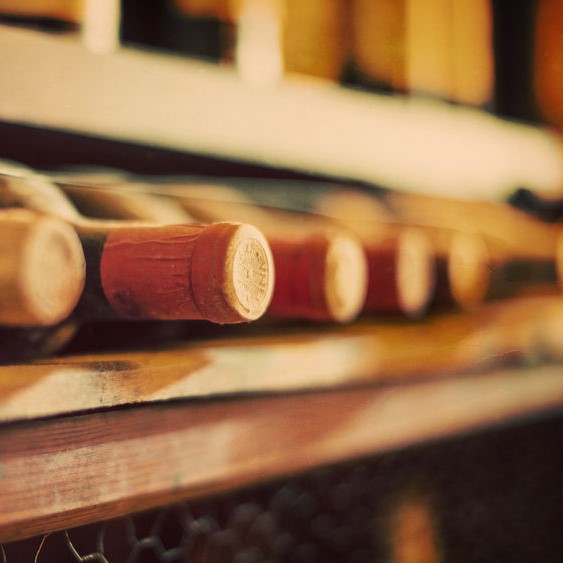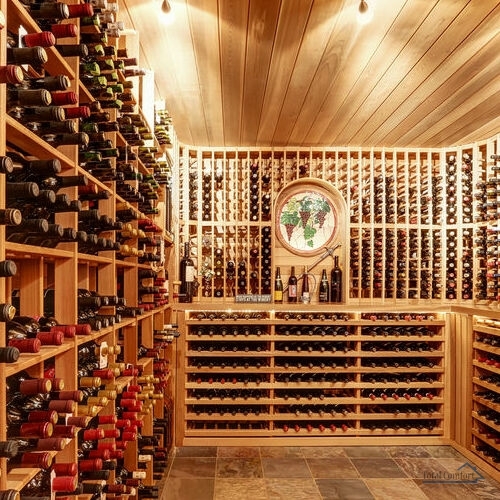Keep your wine cool
 A typical appliance in any kitchens today, whether they are new or remodeled, is a wine fridge or wine cellar. Cooling wine beforehand is key in proper entertainment as well as convenience for yourself. The average house likely will have a wine cooler, whereas wine cellar coolers for homes of stature, multi-million dollar estates, country homes, or vacation homes.
A typical appliance in any kitchens today, whether they are new or remodeled, is a wine fridge or wine cellar. Cooling wine beforehand is key in proper entertainment as well as convenience for yourself. The average house likely will have a wine cooler, whereas wine cellar coolers for homes of stature, multi-million dollar estates, country homes, or vacation homes.
For those of us who enjoy chilled wine but can’t afford an estate with a wine cellar, cooling our bottles of grapes may take more initiative and thinking outside of the box. You may be wondering, “Can I store wine in my basement?”, which is underground and typically damp and cool.
Most of us keep our wine in the kitchen, but the basement would be better. The worst place you can store wine is the kitchen. Why? It gets too hot in the kitchen and a kitchen is typically one of the well-lit rooms in the house. Hence why more homeowners are buying wine fridges.
Wine needs to be stored where the temperature is constantly cool, even if aging it isn’t a concern for you. When wine has been stored properly, you’ll get more enjoyment and pleasure when you do pop that cork. So, where can you store wine if a wine cellar cooling situation isn’t possible? A few rules you need to know:
- In the Dark: Sunlight UV rays are the worst for wine. It causes it to prematurely age. What if your home is full of windows? Keep it in boxes and cover the box with a sheet or towel. Think about a wine cellar, cooling, and darkness rule!
- Keep It Boxed: Today, more of us are ordering our wine online and it arrives boxed up. Unless you’re planning on drinking it all upon arrival, keep it in the box, and if it arrives in a Styrofoam box, even better!
- Even Temp: Wine should never be stored in temperatures warmer than 18 degrees Celsius. Nor should it be stored where the temperature fluctuates. So, the bathroom, broiler room, laundry room, and kitchen are not make-shift wine cellar cooling approved. Neither is the garage, storage shed, or workshop.
- Keep It Inside: When choosing a place to keep your wine as close to wine cellar cooling equivalent as possible, exterior walls of any room is a no-no. Choose cabinetry and closets that are on inside walls of your home, or the space under the stairs can make a great make-shift wine cellar cooling storage.
- Keep It Still: When we’re talking about storing wine, there aren’t good vibrations, especially if it is going to be stored for a long while. The chemicals in wine will become imbalanced, disturbing the sediments, and that quality red wine you have will lose its taste.
- Cork It Sideways: Now that you have determined where your make-shift wine cooling storage is, leave them alone. A corked bottle of wine should be placed on its side to keep the cork moist. Your screw cap wine can be stored standing up. Then leave them alone until you’re ready to pop the cork or remove the cap.
- Ventilate: During the depressions, many families that canned their own vegetables would store them in a cellar or under the house. While this could seem a bit gross, it is really a great place if the area has ventilation. Without ventilation, your wine could smell moldy.
- Humidity: Corked wine and humidity go hand in hand when the humidity is no less than 50% and no more than 80%. You don’t want it too moldy, and a dehumidifier can balance that for you.
How do wine cellar cooling units work?
The ideal humidity range to store your wine is between 50% to 70%, a range that keeps the cork healthy, which is key to good wine. When you store corked wine in an environment that is too dry, the cork dries out, cracks, crumbles, and shrinks. Too humid thought, the cork molds and the wine becomes contaminated.
The temperature is important when storing wine as well, with a setting between 50 degree to 59 degrees considered as optimal. Wine that gets too warm will cook and spoil. Wine that gets too col freezes and expands, pushing the cork out.
A wine cellar cooling system maintains the humidity and temperature at a constant level. Choose a brand for your wine cellar cooling that is reputable, like Breezeaire, CellarPro, or Wine-Mate. Each of these have a variety of features, sizes, and types, so that you can choose the one that fits your wine collection size and budget, preferably a wine cellar cooling and humidification systems all in one. This eliminates the need to worry with the addition of a portable humidifier.
There are wine cellar cooling units that have return air grills with a temperature sensor, creating a controlled environment that quietly cools the air and keeps the moisture level ideal for the corks. There are units available with alarms, audible and visual, that can be set to alert you when the temperature isn’t right too.
What temperature should a wine cellar be?
When it comes to storing wine, the cork is key. The cork should never be allowed to dry out, nor should it become too moist. With that in mind the ideal temperature for wine cellar cooling is no colder than 55°F and no warmer than 57°F and should be constant. The ideal relative humidity should average at 60 percent. At that humidity and temperature range, the wine will mature slowly, mold growth is minimized, and the corks won’t dry out.
Does a wine cellar need ventilation?
Yes, the heat generated by the wine cellar cooling system can reach up to 110 degrees and that needs to be vented to the outside so that the temperature inside the unit stays at an even 55 degrees and humidity no higher than 70 percent and no less than 50 percent.
How do you insulate a wine cellar?

A wine cellar cooling units, self-contained with the ceiling insulated with nothing less than R13, although R30 is recommended. For the walls, on the interior and R19 for the exterior walls. You can use blown-in, fiberglass, or foam.
If you have determined that you have the space for building a wine cellar cooling system in your home, congratulations! This isn’t something that the basic contractor should do though. Search for wine cellar cooling contractors on the internet or ask family and friends who built theirs. A contractor that specializes or has experience in wine cellar cooling construction will know the importance of the humidity and temperature control. Call 478-781-9107 today for wine cellar cooling in Macon, GA.




